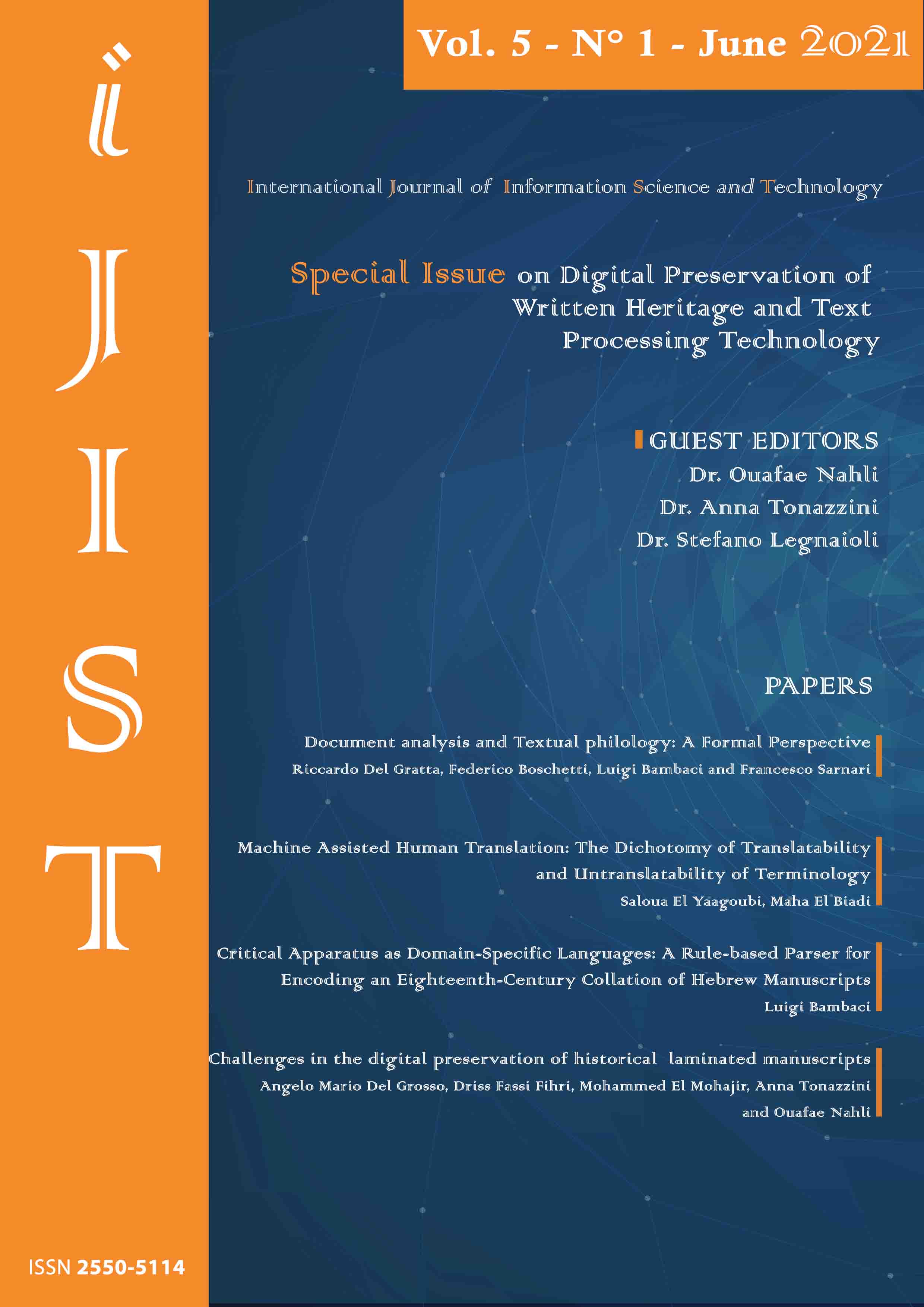Critical Apparatus as Domain-Specific Languages: A Rule-based Parser for Encoding an Eighteenth-Century Collation of Hebrew Manuscripts
Abstract
Manually encoding variant readings is a difficult and time-consuming task.Markup languages ensure data exchange and reusability but are very difficult to handle especially in the case of texts characterized by a rich textual tradition and editions with extensive critical apparatus.Scholars engaged in digitizing printed critical editions find themselves dealing with different levels of problems, including the revision of OCR outputs and the conversion from plain text to a coherent XML encoding. In this article we illustrate how it is possible to exploit the structured language of critical apparatus as means to automate processing and encoding. Finally we discuss the advantages deriving from the adoption of a parsing system over a manual encoding, which go from speed in data acquisition to the possibility of automatically detecting misprints or inconsistencies in the printed source, of correcting errors originated after OCR processing, and of better controlling the generation of semantic errors during conversion into XML code.Our case study concerns the digitization of a collation of Hebrew manuscripts and printed editions realized by the English scholar Benjamin Kennicott in the second half of the XVIII century.The submitting author warrants that the submission is original and that she/he is the author of the submission together with the named co-authors; to the extend the submission incorporates text passages, figures, data or other material from the work of others, the submitting author has obtained any necessary permission.
Articles in this journal are published under the Creative Commons Attribution Licence (CC-BY). This is to get more legal certainty about what readers can do with published articles, and thus a wider dissemination and archiving, which in turn makes publishing with this journal more valuable for you, the authors.
In order for iJIST to publish and disseminate research articles, we need publishing rights. This is determined by a publishing agreement between the author and iJIST.
By submitting an article the author grants to this journal the non-exclusive right to publish it. The author retains the copyright and the publishing rights for his article without any restrictions.
Privacy Statement
The names and email addresses entered in this journal site will be used exclusively for the stated purposes of this journal and will not be made available for any other purpose or to any other party.







